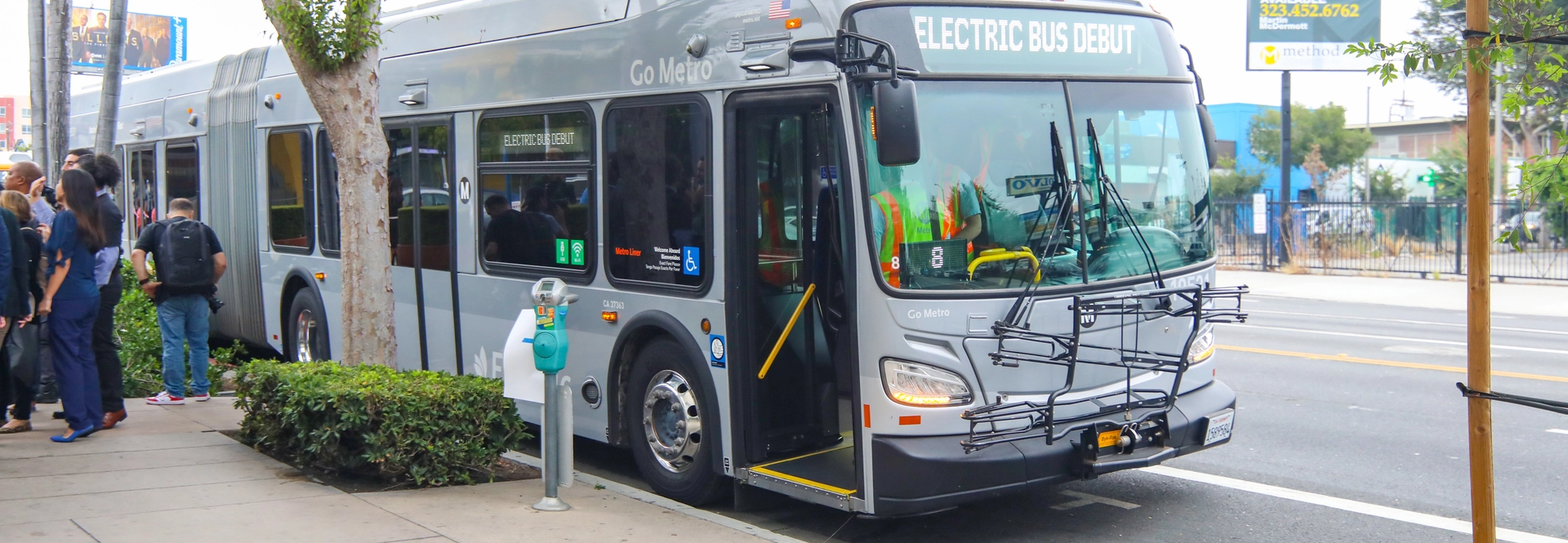LOS ANGELES – The Los Angeles region has secured nearly $900 million in funding to strengthen critical infrastructure, expand the Metro Rail system and reconnect communities ahead of the 2028 Olympic and Paralympic Games through a spending package signed into law by President Biden over the weekend and new grant funding from the Biden-Harris Administration.
LA Metro will receive $709.9 million from the Bipartisan Infrastructure Law and the Fiscal Year 2024 transportation spending law, which will go toward the East San Fernando Valley Light Rail Transit Project and sections two and three of the D Line (Purple) Subway Extension Project. The Los Angeles region will also receive $160 million in new federal grant funding for street and transit infrastructure, traffic safety and to improve connections between neighborhoods. This includes $139 million that will directly improve transportation mobility access during the 2028 Olympic and Paralympic Games and create lasting enhancements for communities.
“During our international delegation to Paris to prepare for the 2028 Olympics and Paralympics Games, the message was clear: there’s no time to waste in strengthening our local infrastructure and transportation system to be ready to welcome the world for the Games,” said Mayor Karen Bass. “I thank President Biden, Senators Padilla and Butler and all of Los Angeles’ federal representatives for their continued partnership to help us secure the funding needed to expand Metro’s transportation system, build new infrastructure at the Port of Los Angeles and increase safety, accessibility, and sustainability for all residents and visitors in the region.”
This funding announcement comes just days after Mayor Bass led an international delegation with City Council President Paul Krekorian, Councilmember Traci Park, Councilmember Katy Yaroslavsky, and Metro CEO Stephanie Wiggins to Paris to generate business development and learn from innovative housing, green transportation, and infrastructure projects to prepare Los Angeles ahead of the 2028 Olympic and Paralympic Games.
“With the 2028 Olympic Games just a few years away, we are investing in transportation infrastructure that both helps the Games run smoothly and makes a lasting improvement to the mobility and connectivity of the communities who need it most. Bikeshare stations can help students get to their college campuses, more efficient bus services will open up job opportunities, and mobility hubs will allow more Angelenos to avoid traffic,” said U.S. Senator Alex Padilla (D-Calif). “I am proud to have secured this critical federal funding for the Los Angeles region that will be felt for years after the Olympic Games end.”
In addition to the $709.9 million secured through the U.S. Department of Transportation’s New Starts and Expedited Project Delivery Pilot Programs federal funding, Mayor Bass’ Office worked with U.S. Senator Alex Padilla and members of the California congressional delegation to secure grants for the following initiatives through the Reconnecting Communities Pilot Program and the Neighborhood Access and Equity Programs:
LA Metro — $139 million: This project will reconnect communities across highway and arterial barriers by creating multimodal investments: bus speed and reliability improvements, first/last mile strategies and projects, mobility hubs, and non‑capital mobility solutions. These investments will improve connectivity in LA County, providing direct benefit to 1 million disadvantaged Angelenos.
LA Metro — $9.96 million: The project is a partnership between LA Metro, Caltrans, and LA County Public Works and consists of the construction of a dedicated pedestrian and bicycle overcrossing adjacent to the existing Humphreys Avenue bridge over the I-710 in the historically disadvantaged community of East Los Angeles. It also includes complementary pedestrian safety and accessibility improvements such as upgraded crosswalks, ADA-compliant curb ramps, and improved sidewalks.
Port of Los Angeles — $5 million: This funding will support a pedestrian bridge over two mainline freight tracks in the Port of Los Angeles (the largest port complex in the Western Hemisphere), which can accommodate emergency vehicles and connect the economically disadvantaged Wilmington community with the Wilmington Waterfront.
Friends of the Hollywood Central Park — $3.59 million: In partnership with the City’s Department of Recreation and Parks, Healing Hollywood aims to use these community planning grant funds to take the Hollywood Central Park, a cap park over the Hollywood Freeway, from a concept design to a shovel-ready project.
City of Los Angeles — $2 million: This grant will support community planning activities with the aim to create 1.7 acres of new open space in one of the most park-poor areas of the City and remove a high-injury arterial adjacent to a high concentration of elementary schools by closing Wilshire Blvd. to vehicular traffic from Alvarado St. to Carondelet St.
“This is great news for anyone who has to navigate our infamous traffic in LA County,” said Stephanie Wiggins, CEO of Metro. “I want to convey my thanks to Metro’s Board of Directors for putting us in a position to receive such favorable news from Congress and I’d like to thank LA County’s congressional delegation and Senators Padilla and Butler for their work on this critical package. We also thank President Biden for signing this bill into law so we can complete these game-changing projects and deliver a world-class transit system for LA County’s 10 million residents.”
Over the weekend, Mayor Bass announced from Paris, France that the City of Los Angeles has secured $9.34 million in congressionally directed spending to continue confronting the homelessness crisis and making affordable housing more available throughout Los Angeles. This is a direct result of partnership between the local and federal levels of government.
